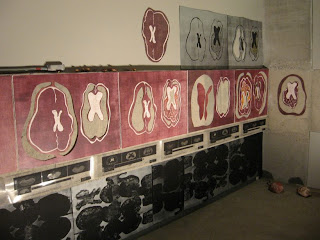 |
| Salix Iterum |
Touch Wood Sculpture Exhibition at the
VanDusen Gardens – June 20 – Sept 30, 2013.
Working on Master Weaver, Alastair Heseltine’s massive willow sculpture
in the VanDusen Gardens was the highlight of my summer. Alastair’s sculpture was based on the Fibonacci Scale (1, 2, 3, 5, 8, 13, etc.), each new number being the addition of the previous 2 numbers. We wove sections of willow according to these numbers that also link in with the idea of the mathematics found in nature through the Golden Ratio.
Alastair Heseltine http://www.alastairheseltine.com/ and Ken Clarke http://hungrythumbs.com/ were the core and key components for
the heavier weaving and erecting of the sculpture. Although I was in a volunteer capacity I was constant and
consistent in my participation and eventually was able to instruct others in
the weaving procedure.


































